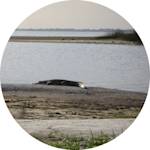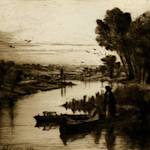Mekong River
2023 CE • East Asia and Southeast Asia
"Originating in the icy headwaters of the Tibetan highlands, the Mekong River flows through the steep canyons of China, known as the upper basin, through lower basin countries Myanmar, Laos, Thailand, and Cambodia, before fanning across an expansive delta in Vietnam and emptying into the South China Sea. It is a deeply interconnected river in which changes in one place can have major consequences elsewhere. Its great productivity—it is home to more than 1,000 species of fish, with many yet to be discovered—depends in large part on seasonal floods that create ideal habitats for fish and water birds, and carry sediment crucial to agriculture downriver. But that natural ebb and flow is increasingly being disrupted, experts say, with the effects of hydropower dams and climate change becoming ever more evident. A large part of the problem has long been China, which operates 11 dams on the Mekong. During times of extreme drought, like now, China’s portion of the river contributes up to half of the river’s flow, with the dams holding back more than 12 trillion gallons of water, severely disrupting the water flow downstream . . . Fishers and farmers in northern Thailand have long had to deal with wild fluctuations in river flow as China stores and releases water from its dams. Such changes have a detrimental impact on fish migration, and sudden increases in water level often wash away crops, livestock, and equipment, disrupting rural economies . . . Relying on the rescue of Mother Nature, however, has become increasingly fraught in the Mekong region, which studies show is particularly vulnerable to climate change."
Stefan Lovgren, "Southeast Asia’s most critical river is entering uncharted waters," National Geographic, January 31, 2020.
Image: International River via Flickr, Attribution-NonCommercial-ShareAlike 2.0 Generic (CC BY-NC-SA 2.0)


Learn about Maya Lin’s fifth and final memorial: a multi-platform science based artwork that presents an ecological history of our world - past, present, and future.

Discover ecological histories and stories of former abundance, loss, and recovery on the map of memory.

Learn how we can reduce our emissions and protect and restore species and habitats – around the world.

See how art can help us rethink the problems we face, and give us hope that each one of us can make a difference.

Help make a global memorial something personal and close to home. Share your stories of the natural world.


